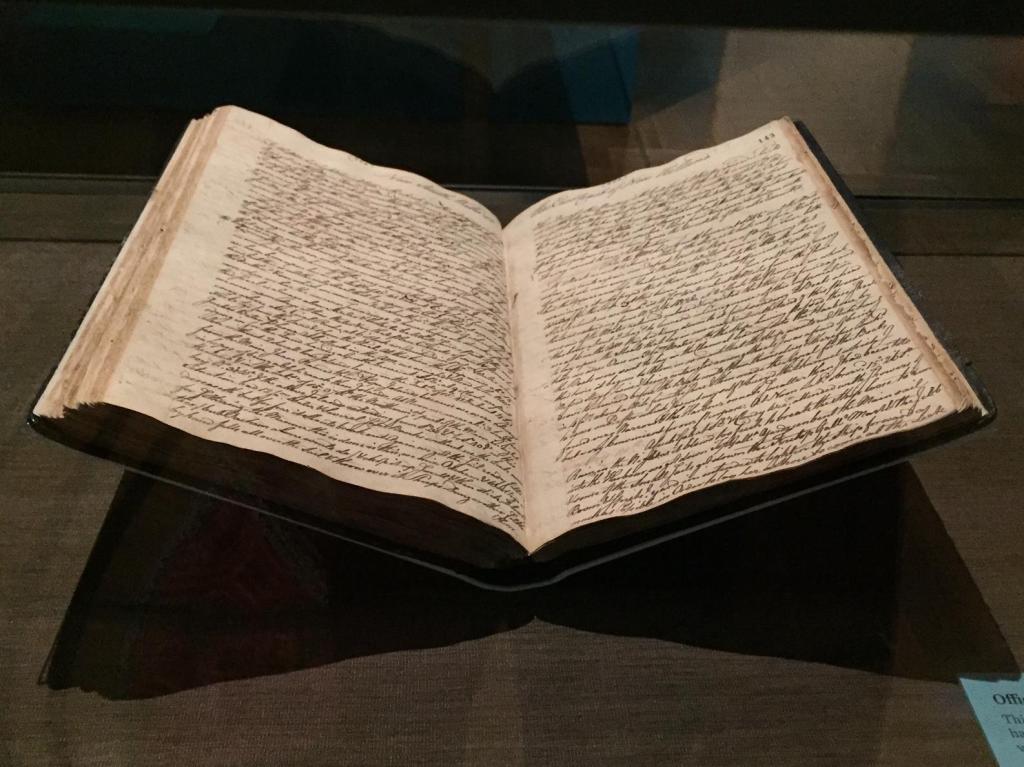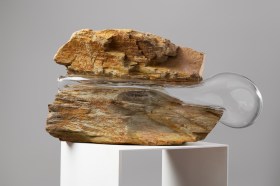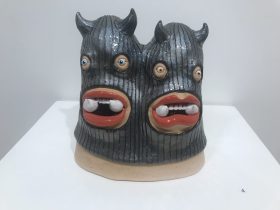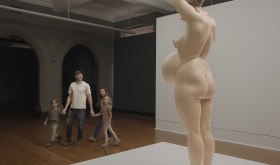James Cook (1728–1779), Journal of HMB Endeavour 1768–71; ink, Manuscripts Collection, National Library of Australia, Inscribed on the UNESCO Memory of the World Register, 2001
I had come to the National Library of Australia (NLA), drawn by an Instagram snap to look at a multi-channel video projection Beauty, Rich and Rare. It enticed: ‘Discover what happens when 250-year-old artworks, letters and journals meet the latest in digital storytelling technology.’
It looked stunning – an evolving and morphing botanical narrative that illuminated Australia’s natural beauty as encountered by famed English botanist Joseph Banks – and the “real thing” didn’t disappoint.
Wrapping in a gentle arc in a darkened room this three-channel narrative traced Banks’ 250-year old journey under the captaincy of James Cook. Travelling with botanical artists Daniel Solander and Sydney Parkinson, two greyhounds and a guitar, not to mention a pose of servants, this video piece offered a much broader story of discovery.
It is a very easy view, and a great learning tool.
Apparently, it is the first time that the NLA’s collections have been reimagined in an immersive digital experience, and they worked with AGB Events, known for their Vivid light creations.

Installation view Beauty, Rich and Rare, commissioned by National Gallery of Library in collaboration with AGB Events; Photo Artshub
However, I did not immediately get to the 4th Floor Brindabella Room where Beauty, Rich and Rare was presented. Rather, my curiosity sucked me into the NLA’s ground floor galleries where the exhibition Cook and the Pacific was showing.
There was a video portrait by a Maori elder at the entrance beckoning visitors in; his welcome – our “first impact” – was partnered with portraits by Indigenous artist Michael Cook Undiscovered #4 (2010), Maori artist Micael Tuffery Cookie in Te Wai Pounamu Meets Cook Strait (2011), one of the earliest posters issued by the Australian National Travel Association by Percy Trompf The Landing of Captain Cook at Botany Bay 1770 (1929) and a more traditional view of Cook by John Webber Portrait of Captain James Cook RN (1782).
The line-up immediately perked my interest. Were we finally going to get a different account of history?
The NLA introduced Cook: ‘Captain James Cook is an enigma. A complex and almost mythical figure in history. His legacy is mixed. For some, he is the great navigator, sailor and commander. For many First Nations peoples across the Pacific, he symbolises centuries of dispossession …Yet each Pacific encounter was two-sided, and today Cook and the impact of his voyages had on First Nations continue to resonate powerfully.’
It presented a multifaceted portrait of the man, and set the tone for this exhibition – which again did not disappoint.
Curated by Dr Martin Woods and Dr Susannah Helman, the exhibition contains about 180 books, maps, artefacts, scientific instruments, botanical specimens – even a playbill inspired by Cook’s voyage – which were drawn from NLA’s collections and museum collections in Britain, Hawaii and New Zealand.
The central highlight to the exhibition offered a world first – all three of Captain James Cook’s journals from his three Pacific voyages are on display, written in his own hand. It was a highlight to stand in front of such a personal account – one that has shaped our history and identity.
The NLA’s Endeavour Journal was purchased by the Australian government for £5000 at a Sotheby’s auction in 1923, and is joined by a pair from the British Library in London. Also from the British Library is Cook’s last logbook – its final entry made on 17 January 1779, just under a month before Cook was killed at Kealakekua (Karakakooa) Bay in Hawaii on 14 February.
And yes, the swordfish dagger that has been purported to have been used to kill Cook is also on display.
It is understood that the exhibition has been made possible through a $2.1 million grant from the Australian government as well as contributions from corporate sponsors. It has been timed to coincide with the 250th anniversary of the date that Cook departed on his first Pacific journey.
It is doubly uncanny, in the months before the exhibition opened in Canberra, the shipwreck of the Endeavour was discovered off Rhode Island on the north-eastern coast of the US. Walking into the first gallery of the exhibition visitors are faced with an exquisite model of the ship, along with items such as Cook’s box of navigational instruments from c. 1750 alongside, his first lieutenants telescope, the library of books from the Endeavour, a floor plan of the ship, and a cannon that was jettisoned after the Endeavour nearly ran aground on the Great Barrier Reef.

Installation view model of Endeavour, books from the ship’s library and navigational tools used by Captain James Cook and his crew; Cook and the Pacific at National Library of Australia, Canberra; photo ArtsHub
Such crude simple instruments that sit in contrast to the technology today – as we snap these treasures on our iPhone and read about the discovery of the shipwrecked Endeavour.
While a circle of awe sits around these instruments and perpetuate their story, it is the alternative narrative that sits shoulder to shoulder with these objects that is most impressive.
Towards the end of the exhibition there are two focus areas, Collecting Cook and Cook after Cook, which examine the ‘stuff of legends’ against the impact of that contact and colonisation.
There are event records of languages reflected the relationships they had with various Indigenous peoples and that they consulted with present-day members of those peoples to obtain their impressions of what was recorded.
A fabulous suite of works by contemporary Aboriginal artist Karla Dickens, Michael Cook, Carol Ruff and Michel Tuffery among others, sit alongside advertising posters, dance and theatre bills and cartoons. It is not a hard line critique of this history but rather is inclusive of the nuanced in this timeline as alternative voices and histories emerged.

Installation view section “Cook after Cook” within the exhibition Cook and the Pacific at National Library of Australia, Canberra; photo ArtsHub
NLA writes in a didactic text in the exhibition: ‘As his voyages faded from living memory, Cook became the stuff of legend. In the 1970s authoritative editions of voyage journals, and detailed studies of the art and artefacts from the voyages, gradually revealed a nuanced story. Cook had himself been uneasy about the impact of his voyages on peoples of the Pacific.’
Simply, this exhibition reminds that Cook’s three Pacific voyages between 1768 and 1780 were both scientific and strategic. It illustrates relationships, pride, human value and the emotions in building an identity around this narrative, that desperately needed a rethink.
Overall the NLA have done a pretty good job, and should you be heading down to Canberra before February, then this exhibition is a must see on your list. It is beautifully presented, thoughtfully curated and offers a multifaceted portrait.
4 ½ stars ★★★★☆
22 September 2018 to 10 February 2019
Exhibition Gallery, Ground floor
Free; bookings suggested
Beauty Rich and Rare
22 September 2018 to 10 February 2019
Brindabella Room, 4th floor, National Library of Australia, Canberra.
No booking required





